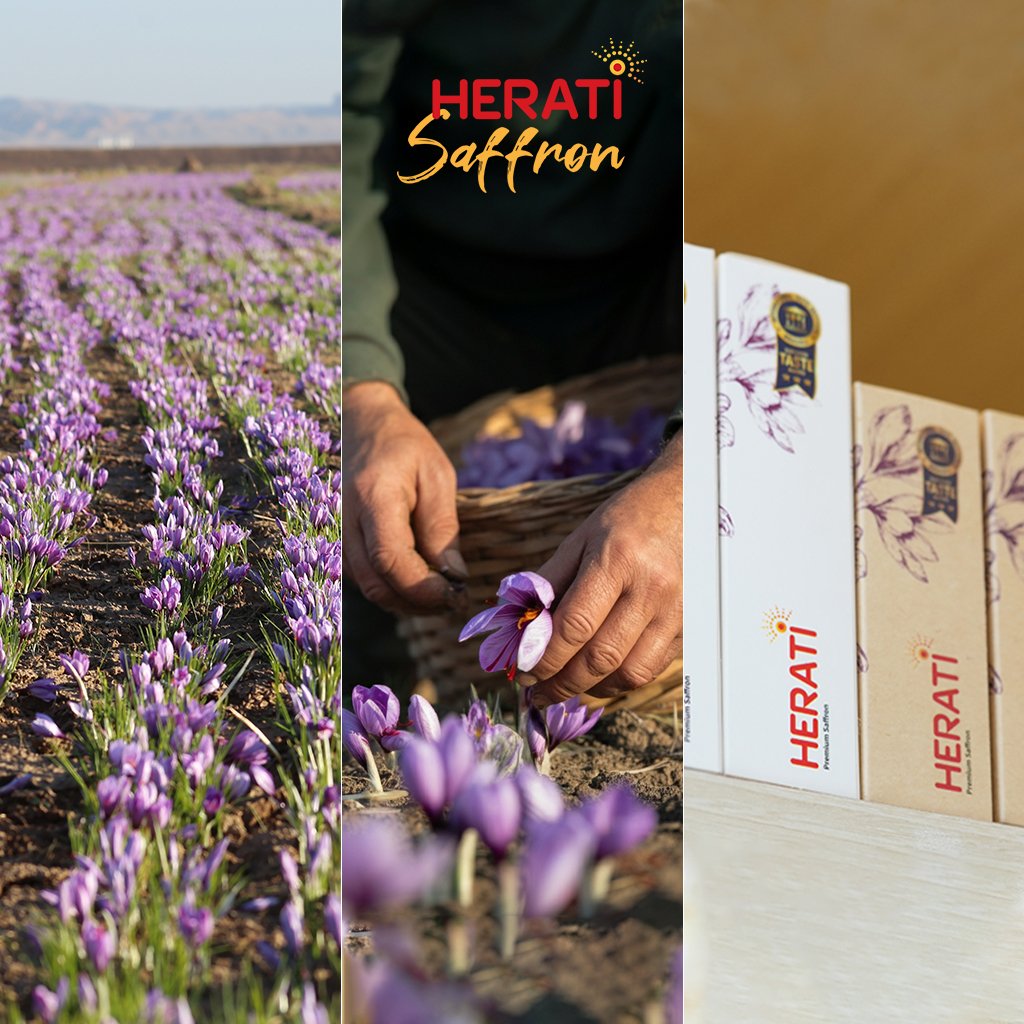Saffron, known worldwide as the “red gold,” comes from the corm of the Crocus sativus flower. These corms are the foundation of saffron cultivation, and their quality directly affects the flavor, color, and yield of saffron threads. In Herat, Afghanistan, saffron farming has become famous for producing some of the world’s most pure quality saffron, often called Herati Saffron. Healthy corms are always large, firm, and disease-free, ensuring a strong and valuable harvest that meets international standards.

Planting Saffron Corms
The best time to plant saffron corms is in late summer to early fall (August to September in most regions). Planting during this period allows the corms to develop roots before winter. As the colder season arrives, the plant stays dormant underground, and in autumn the purple saffron flowers bloom, producing the precious red stigmas. Planting at the right time ensures the corms remain strong and continue producing high-quality saffron for years.

Growing Conditions for Saffron Corms
To achieve the pure quality saffron that Herati farmers are known for, corms must be planted in optimal conditions:
- Soil: Well-drained soil prevents rot and keeps corms healthy.
- Sunlight: A sunny location ensures strong flower growth.
- Watering: Moderate watering is sufficient — too much water can damage corms.
Once planted, saffron corms can remain in the ground for 3–4 years. However, many farmers in Herat prefer to replant each year to maximize yield and maintain the reputation of their saffron as some of the finest in the world. Proper care of the corms ensures that each harvest continues to meet international quality standards.
Harvesting Saffron Corms
The ideal time to harvest saffron corms is late summer, when the nights begin to cool. This allows farmers to remove corms from the soil carefully while keeping them healthy for replanting.
Corms can also be harvested until mid-autumn, especially if they will be replanted in the same area. This flexibility helps saffron farmers across Afghanistan adjust to their climate and soil conditions. Some growers in Herat even harvest earlier in summer. This gives them extra time to prepare large fields, benefit from more affordable seasonal labor, and ensure the land is ready for planting on schedule. Careful harvesting preserves the corms’ strength, which is essential for maintaining Herati Saffron’s world-class quality.

Maintaining Quality Through Corm Care
Saffron corms are at the heart of saffron farming. By planting and harvesting them at the right times and under ideal conditions, farmers preserve their vitality and productivity. Strong, healthy corms directly lead to saffron with superior flavor, vibrant color, and higher yield — the hallmarks of Herati Saffron. Understanding this process ensures that saffron cultivation in Herat continues to shine as a symbol of excellence and tradition.



